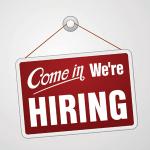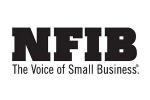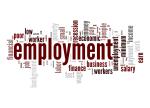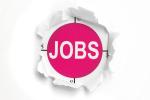WASHINGTON — The National Federation of Independent Business (NFIB) Small Business Optimism Index increased by three points in May to 98.8, slightly above the 51-year average of 98, the organization reports. Expected business conditions and sales expectations contributed most to the rise.
The Uncertainty Index rose two points from April to 94. Eighteen percent of small-business owners reported taxes as their single most important problem, up two points from April and ranking as the top problem. The last time taxes were ranked as the top single most important problem was in December 2020.
“Although optimism recovered slightly in May, uncertainty is still high among small-business owners,” says NFIB Chief Economist Bill Dunkelberg. “While the economy will continue to stumble along until the major sources of uncertainty are resolved, owners reported more positive expectations on business conditions and sales growth.”
Key findings of the survey include:
- The net percent of owners expecting better business conditions rose 10 points from April to a net 25% (seasonally adjusted).
- The net percent of owners expecting higher real sales volumes rose 11 points from April to a net 10% (seasonally adjusted). This component contributed the most to the Optimism Index’s improvement.
- Twenty-two percent (seasonally adjusted) plan capital outlays in the next six months, up four points from April and the highest reading of this year.
- The percentage of small-business owners reporting labor quality as the single most important problem for business fell three points from April to 16%.
- Fourteen percent of owners reported that inflation was their single most important problem in operating their business, unchanged from April.
By the Numbers
When asked to rate the overall health of their business, 14% reported excellent (up one point), and 55% reported good (down one point). Twenty-eight percent reported it to be fair (up one point) and 4% reported poor (unchanged).
A seasonally adjusted 34% reported job openings they could not fill in May, unchanged from April. Of the 55% of owners hiring or trying to hire in May, 86% reported few or no qualified applicants. A seasonally adjusted net 12% of owners plan to create new jobs in the next three months, down one point from April.
Labor costs reported as the single most important problem rose one point in May to 9%.
Seasonally adjusted, a net 26% reported raising compensation, down seven points from April. A seasonally adjusted net 20% plan to raise compensation in the next three months, up three points from April.
Fifty-six percent of owners reported capital outlays in the last six months, down two points from April and the lowest reading of this year.
Of those making expenditures, 40% reported spending on new equipment, 26% acquired vehicles, and 15% improved or expanded facilities. Ten percent spent money on new fixtures and furniture, and 5% acquired new buildings or land for expansion.
In May, the percentage of small-business owners reporting poor sales as their top business problem remained at 9% for the fifth consecutive month. A net negative 13% of all owners (seasonally adjusted) reported higher nominal sales in the past three months, down five points from April.
Seasonally adjusted, a net 31% plan price hikes in May, up three points from April. The net percent of owners raising average selling prices was unchanged from April at a net 25%, seasonally adjusted. Unadjusted, 10% of owners reported lower average selling prices and 38% reported higher average prices.
The frequency of reports of positive profit trends was a net negative 26% (seasonally adjusted) in May, five points worse than in April. Among owners reporting lower profits, 36% blamed weaker sales, 13% cited the rise in the cost of materials, 11% cited usual seasonal change, and 8% cited labor costs. For owners reporting higher profits, 52% credited sales volumes, 27% cited usual seasonal change, and 8% cited higher selling prices.
Five percent of owners reported that financing and interest rates were their top business problem in May, up two points from April. Twenty-five percent of all owners reported borrowing on a regular basis, down one point from April. A net 4% reported their last loan was harder to get than in previous attempts, down one point from April. A net 7% reported paying a higher rate on their most recent loan, up one point from April.
Ten percent (seasonally adjusted) of owners reported that it is a good time to expand their business, up one point from April. Despite the increase, this remains a low reading historically.
The percentage of small-business owners reporting government regulations and red tape as their single most important problem remained at 9%. Four percent reported competition from large businesses as their single most important problem, down three points from April.
The NFIB Research Center has collected Small Business Economic Trends data with quarterly surveys since 1973 and monthly surveys since 1986. Respondents are randomly drawn from the NFIB membership.
Have a question or comment? E-mail our editor Dave Davis at [email protected].

































































